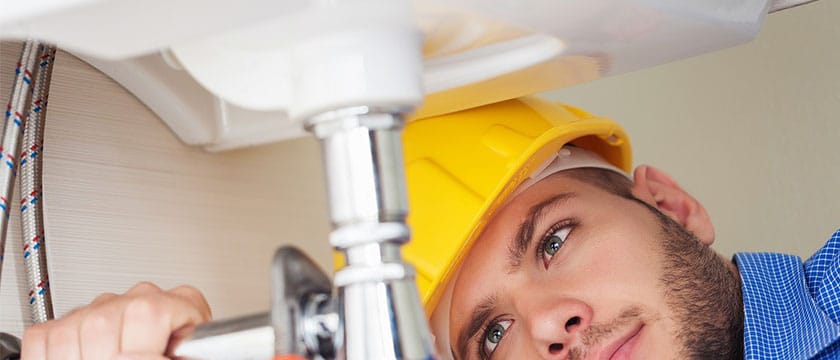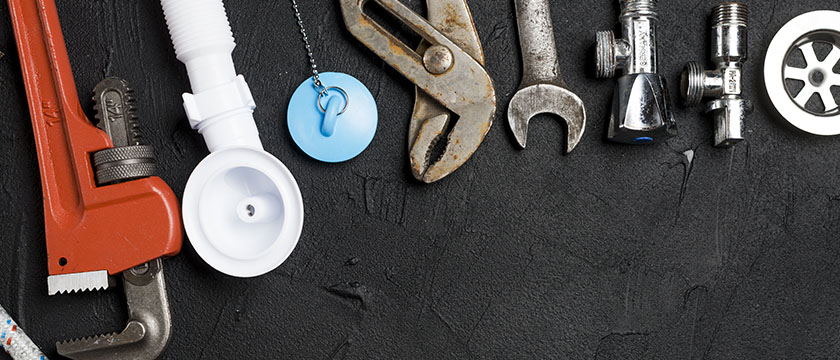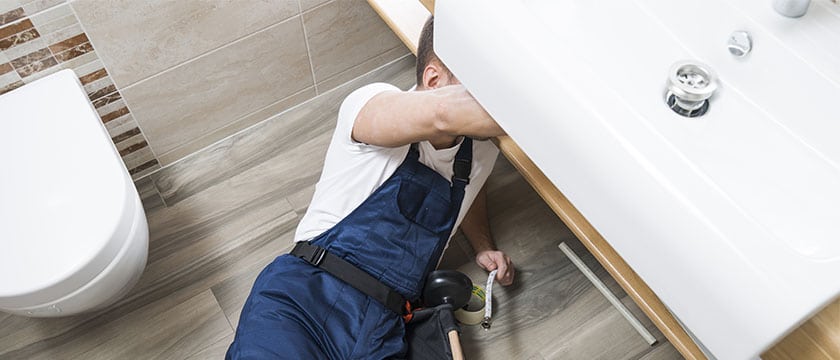Myrtle Beach, SC
Mon - Sat 9.00 - 19.00 Sunday Closed

3DIY (Do It Yourself) Plumbing Tips
With most people, all they know about the plumbing in their home is that when they turn on the faucet, water appears. But did you ever wonder what goes on behind the walls that allow that to happen?
DIY Home Plumbing Projects –Tips to Save
If the foundation is the backbone of your home, the intricate water and drain piping installed in the vicinity of your home are the blood vessels keeping it fresh and hygienic.
If, as a passionate DIY enthusiast, you want to take charge of your home’s plumbing, continue to read this troubleshooting guide until the very end so you can understand the ins and outs of your home.
Let’s start from the beginning!
The water sources
Most homes receive their water from a water company, and it enters their property through a “water main” from the street. From here, it passes through the main shut off valve and the water meter and then into your home. It’s a good idea to learn where the main shut off valve for your home is located in case of an emergency. And if your particular valve requires a specific key to operate, then make sure you have one on hand.
Piping
OK, so now the water’s in your house, now what?
The water travels through the water supply line installed in your home. It’s usually an inch in diameter, and it goes directly into your water heater. From here, it splits into vertical hot and cold-water pipes called rises. In these supplies, pipes travel in pairs to the various plumbing fixtures in your house.
In older homes, these water supply pipes may be made of galvanized steel, but in most modern homes, they are half an inch or three-quarter-inch copper. And FYI – the larger the diameter of these pipes, the better will be the water pressure.
So,if your kitchen or washroom isn’t getting sufficient water pressure, consider upgrading to a larger and quality pipe.
Draining System
Your home is constructed with a pretty complicated system of rigid plastic drainpipes, and it all starts with the main stack.
The main stack is usually three or four inches in diameter, and it travels from the main sewer line all the way up through your house and is vented out the roof. This vent allows methane and other noxious gases to escape, and it provides much-needed air, so you drain the system flows freely.
All the drain lines for all the fixtures in your home flow through horizontal drainpipes and into this main stack, and each fixture is vented through a tube.
Now in order for the various drains to flow into the main stack, the water needs to flow downhill gently.
Calls may vary, but these horizontal branch drain pipes typically need to slope down at least a quarter of an inch for every foot travel. In other words, a brand drain traveling four feet to the main stack needs to slope downward a full inch. Generally speaking, a drain system that flows slowly, smoothly, and makes sweeping turns rather than sharp ones is best.
But in case there is a clog, there are cleanouts located throughout the system and easily accessible places, so you or a professional can sneak out the clogged pipe.
- By: WebPro
- Repairs
- Comments: No Comments

DIY Plumbing Tips: Easy Steps, Tricks, and Tips for Beginners
Leakages in your house are an awful sight to see, and for some people, it could be scary! The first thing that they think they need to do is call a plumber to fix those leakages for them, but it shouldn’t be the case. These DIY Plumbing Tips should be the first solution rather than calling a plumber.
In this article, I will tell you about simple DIY Plumbing tips to know the simple solutions to the most common plumbing problems. These will be sure to make your house leakage.
No matter your skill, Do it yourself plumbing is best suited for beginners or experts, as well as everybody who wanted to have a quick fix with their pipes.
Why You need DIY Plumbing Tips?
It is essential in every household to know how to do regular maintenance, as it will save you a lot of money. Plumbers can charge you big, and as a beginner, you wouldn’t even know if it will be worth it. So you better learn a lot of DIY Plumbing Tips, and that is why this article is just right for you!
DIY Plumbing Tips That You Need To Know
Tip 1: Know Where The Shut Off Valves In Your House
Always note where is the location of your shut-off valve in your house, even if you are not the type to check these things, it is crucial to do. It is because you need to be familiar if ever you need to shut off the water when a major leaks take place. Also, take note of drains, sewer lines if ever you do some cleanouts.
Houses are different from apartments and condo, so the latter two may have various shut-off valves. It is best to inquire about your property manager to know where it is and how do they handle it.
Tip 2: Find Out What Is Flushable
Have you ever seen signages in public toilets, hotels, and restaurants what not to flush inside the toilets? It is because it could be a major disaster if you flush anything there. Do the same treatment in your house toilet, and don’t use it as a trashcan. Flushing anything can lead to clogs and also take note of baby wipes that are “flushable” as it can block your system.
Tip 3: Use A Bucket Of Water To Flush The Toilet
There will be times that your flusher won’t work, and you might wonder what will you do when it happens. The best solution is to grab a bucket, fill it with water, and dump the water in the bowl. You’ll usually be able to get one flush per bucket.
Tip 4: Don’t Use Your Kitchen Drain As A Trash Can
We need to be aware of what we dump in our kitchen drain. You should never dump food debris, fruits and vegetable peelings, coffee grounds, and grease down your drain as it will clog your pipes. It could cause major clogging if ever as you might need a lot of pumping and cleaning your pipes if it happens.
Check your kitchen drain manual so you can find out what exactly you can’t put down the drain.
Tip 5: Have Your House Plunger Ready
You need to make sure that your house or apartment has an available as clogging can happen anytime, as you don’t want to buy a plunger in the middle of the night to unclog your toilets and drains. Investing in good plungers should also be noted to clear clogs.
Also, when you plan to clean your sink traps, you need to use a plunger to push the water out. It could do you a favor as it will be less wet and messy.
Tip 6: Use Your Vacuum
Accidents happen, and it may happen when you accidentally put small solid objects inside your drains like toys, shaver, and brushes. You need to have a wet-dry vacuum so that it will suck the object out of the pipe or toilet. Using a plunger isn’t advisable as it will only push it deeper, and you will have more difficulty to remove it.
Tip 7: Remove Clogs Without Using Chemicals
You don’t need to but you can use expensive chemical drain cleaners to unclog your drains with debris. You can use a drain snake as it is easy to use. Just insert it into the drain and pull it back out, simple and easy. You could always use your vacuum if this didn’t work out.
Tip 8: Replace Things Inside Your Toliet or Faucet On Your Own
Do not be afraid of tinkering with the parts of your toilet as most of its parts are doable by yourself. There are things inside your bathroom and faucet that can easily be replaced, and there is no need to call for a plumber. You can buy it at your local hardware store, and most of them even have a step by step manual on how to do it.
Tip 9: Leaks Should Not Be Ignored
A small leak is not the type to be worried about, but it could cost you as leaks waste up to eight gallons of water in a day, so no wonder if your water bill is getting high. You need to fix any leaks you have inside the house as it could turn in to a big and expensive problem.
Tip 10: Don’t Puncture Your Pipes
If you are planning to drill holes unto your walls, floors, and ceiling, you need to make sure if your pipes aren’t around that area. Take note of your piping plan first before doing some small renovations around your house as you don’t want to puncture them as it will lead to problems accidentally. If you are not sure about where your pipes are, you can get an endoscopic camera and see if something is on the way.
Final Thoughts
Maintaining your house plumbing system shouldn’t be so stressful if you know how to do plumbing yourself. If you know these handy DIY plumbing tips, it wouldn’t be a problem for you as you can immediately have solutions for most leakages and other issues in your home.
I hope you learned a lot from this article and keep in mind the DIY plumbing tips so you can have a leak-free home!
- By: WebPro
- Renovation
- Comments: No Comments

Don’t Get Yourself into Hot Water!
Have a Few Plumbing Tricks Up Your Sleeve
There’s nothing more humiliating than having to admit you don’t know what to do in a plumbing emergency!
But freezing weather and home emergencies are all too common occurrences, and the damage they could cause can be catastrophic.
There are a few essential plumbing tips that all of us would find extremely useful at some stage in our lives, but how many of us take the time to find out what they are?
Because not every plumbing problem needs a professional…
We’ve all been there – suddenly, a water pipe bursts, and instead of dealing with it in a calm, measured way, we freak out, shrieking for someone to call a plumber as we don’t know how to deal with it ourselves.
But you could save hundreds of dollars by sorting the issues out yourself.
With the right tools, you too can become a plumbing pro – as long as you keep to the easy stuff…
The most critical piece of plumbing advice is, knowing how to switch off the primary water source!
Should your plumbing be unfortunate enough to freeze, you’ll have to cut off your water supply to make repairs.
For any plumbing jobs, knowing how to cut off your water supply is paramount.
All you have to do is switch off an indoor supply valve –it could be by the guilty culprit itself, such as next to the washing machine or drier.
Or, the big brass or redmain shutoff valve which is usually located near the main water pipe leading into your house.
Simply close the valve and your water supply to the individual fixture, or the whole house, should be shut off.
Put a bucket under the part you are going to repair to catch the excess water.
Run all taps and flush loos until all the water has run out.
Perhaps you have a leaky faucet?
A slow drip usually means that all you have to replace is a washer – easy as long as you have the right size!
There’s nothing more annoying than a clogged drain, which could have been caused by debris caught in your drainpipe.
You can fix this with a sink plunger or a cable auger, which you can wriggle down the drain.
But make sure you avoid putting chemicals down your drain as they can damage your pipes!
Instead, use baking soda or vinegar to clean the pipes and to rid of grease and dirt, which can cause blockages.
Another plumbing job you can tackle yourself is the de-clogging of your garbage disposal.
Just make sure you turn off the power of the disposal at the source before you attempt making any repairs.
If you want to save money, you can upgrade your showerhead and save yourself up to 30% on your monthly water bill!
Larger plumbing jobs you can do yourself, with just a bit of confidence, is installing a loo!
You can buy new toilets at any DIY store and follow the instructions.
The primary thing for installation is to ensure you get a proper seal, as without it being installed properly, it could end up as rather a smelly job…
With a bit of nuance and the right tools, you too can fix a few simple plumbing jobs around the house and save yourself a lot of money!
- By: WebPro
- Plumbing
- Comments: No Comments

